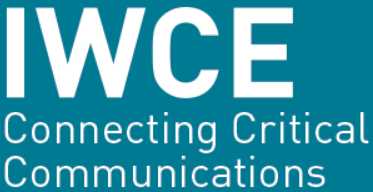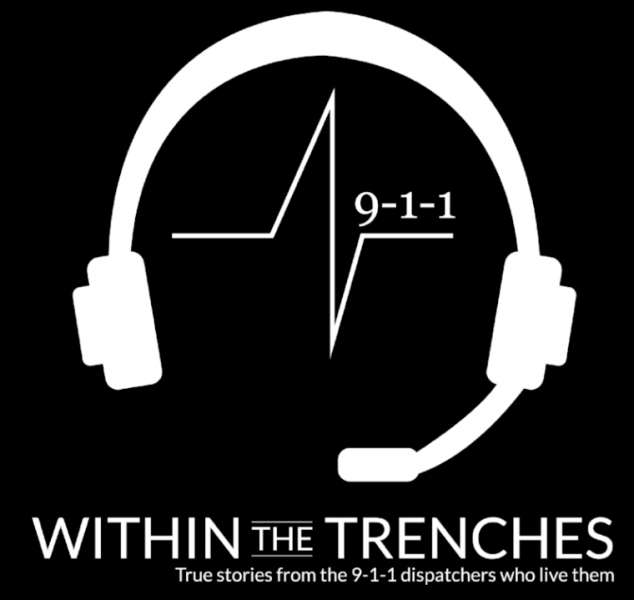Bienvenidos/as | Welcome
Bienvenidos/as a la Comunidad Virtual SES. La prioridad de esta Comunidad es habilitar un espacio común donde las autoridades y el personal de los Sistemas de Emergencia y Seguridad (o sus equivalentes) de la región puedan intercambiar, compartir y consultar información, materiales y herramientas sobre temas de interés, a fin de fortalecer y mejorar la calidad de la atención que se le brinda a la población en situaciones de emergencia.
Haga clic en la palabra Instrucciones para bajar una presentación con los pasos que debe seguir para registrarse como miembro de la Comunidad-SES.
---
Welcome to the ESS Virtual Community. The Community's current priority is to provide a common space where authorities and personnel of emergency and security systems (or their equivalents) in the region may exchange, share, and access information, materials, and tools on topics of interest, in order to stregnthen and improve the quality of emergency services.
Click on Instructions to download a presentation with the steps you need to follow to register as member of the ESS-Community.
Novedades | Highlights
Enlaces de interés | Relevant links
Sistemas de Emergencia y Seguridad | Emergency and Security Systems
Costa Rica: Sistema de Emergencias 9-1-1
Ecuador: Servicio Integrado de Seguridad ECU911
Honduras: Sistema Nacional de Emergencias (SNE)
México: 9-1-1 Emergencias
República Dominicana: Sistema Nacional de Atención a Emergencias y Seguridad 911
Leyes | Laws
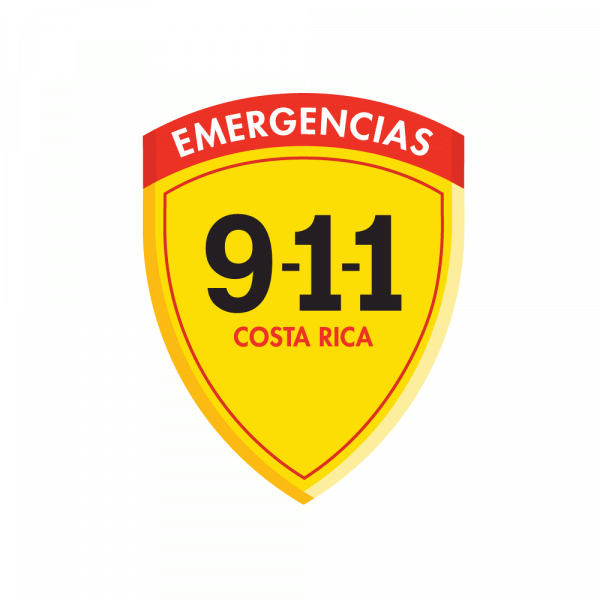
Costa Rica: Sistema de Emergencia 9-1-1
Ley Nº 7566 de Creación del Sistema de Emergencias 911 (1995)
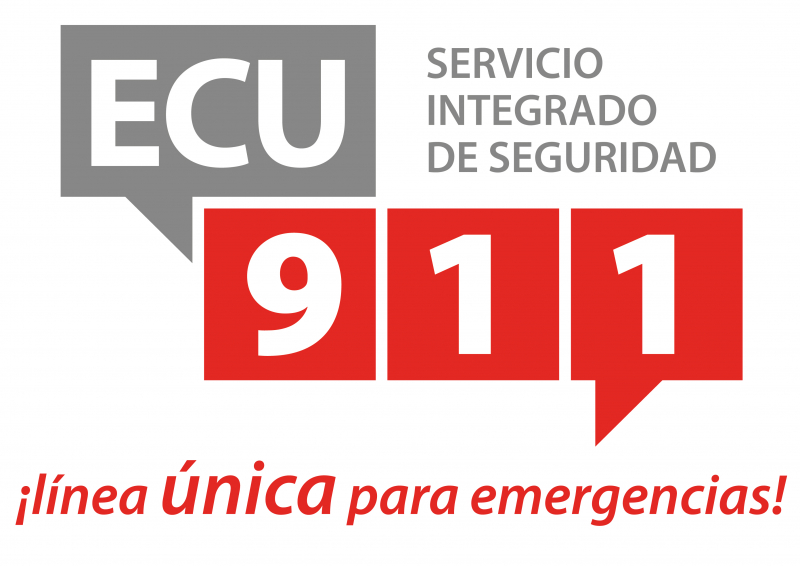 Ecuador: Servicio Integrado de Seguridad ECU-911
Ecuador: Servicio Integrado de Seguridad ECU-911
Decreto Ejecutivo Nº031 que reforma el Decreto Ejecutivo Nº988 (2013)
 Guatemala:
Guatemala:
Deceto Legislativo 109-1996: Ley y Reglamento de la Coordinadora Nacional para Reducción de Desastres (1996)
Decreto Número 18-2008: Ley Marco del Sistema Nacional de Seguridad (2008)
 Honduras: Sistema Nacional de Emergencia 911
Honduras: Sistema Nacional de Emergencia 911
Ley del Sistema Nacional de Emergencias (Decreto No. 58-2015)
Reforma de la Ley del Sistema Nacional de Emergencias (Decreto No. 49-2021)
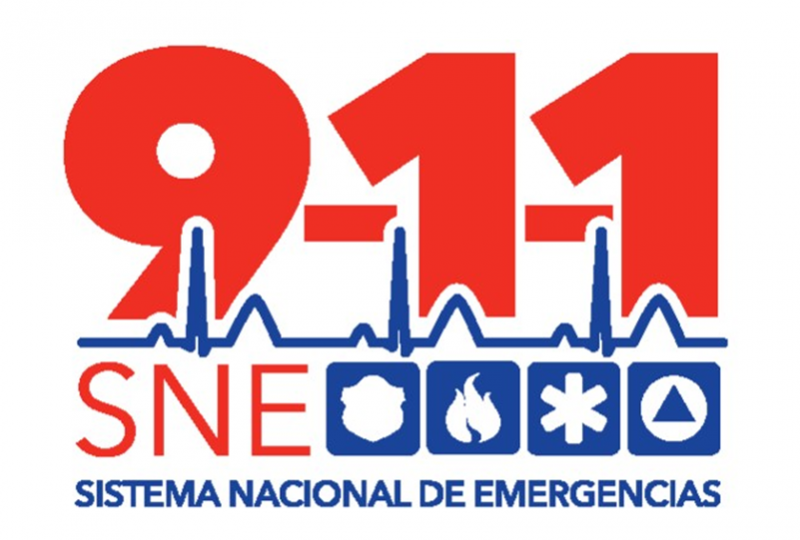
Panamá: Sistema Nacional de Emergencias 9-1-1
Ley 44 del Sistema Unico de Manejo de Emergencias 9-1-1 (2007)
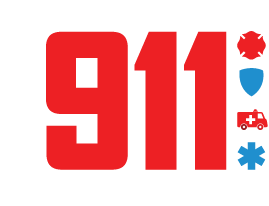
República Dominicana: Sistema Nacional de Atención a Emergencias y Seguridad 9-1-1
Ley que establece el Sistema Nacional de Atencióm a Emergencias y Seguridad 9-1-1 (184-17)
Día Interamericano | Inter-American Day
EENA Conferencia Anual | Annual Conference
NENA México | Congresos Internacionales
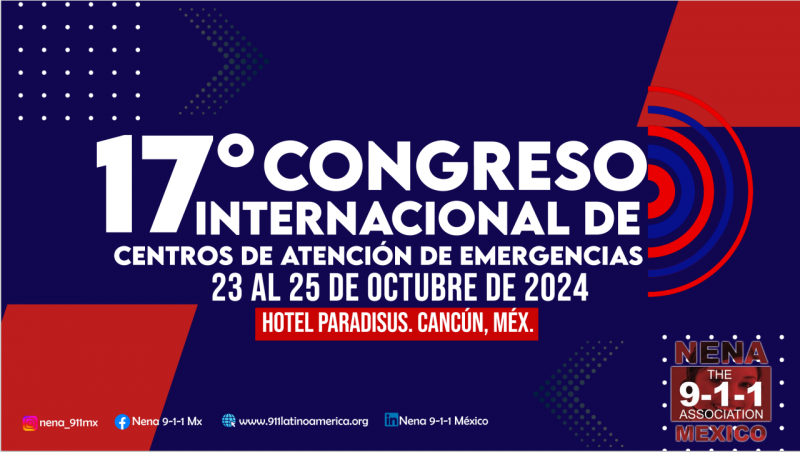 17 Congreso Internacional de Centros de Atención a Emergencias
17 Congreso Internacional de Centros de Atención a Emergencias
SNE 911 Honduras | Boletín Informativo
Información básica de los Sistemas de Emergencia | Basic information on Emergency Systems
Ultimo Evento | Last Event
Evento Virtual de Pre Celebración del Día Interamericano del Número Unico de Emergencia
El viernes 9 de febrero, el SIS ECU 911 y el Departamento de Seguridad Pública de la OEA, organizaron un evento virtual de pre celebración del Día Interamericano del Número Unico de Emergencia.
La agenda y los materiales utilizados durante el evento están disponible aquí.
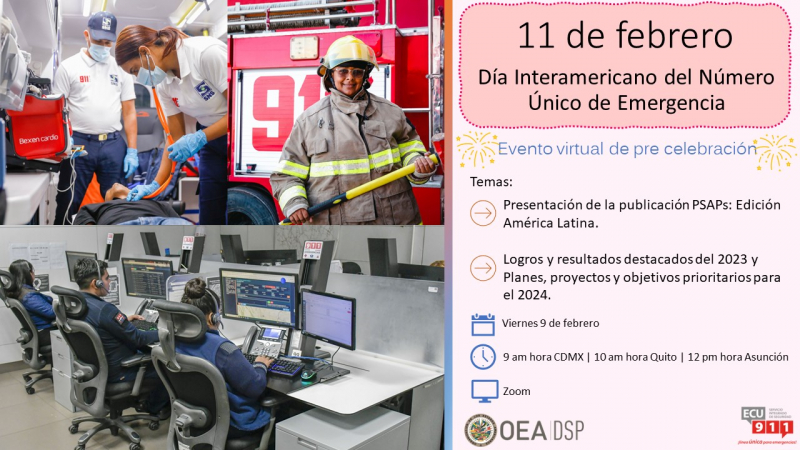
Evento Pasado | Past Event
Primer Conversatorio del 2023 del Grupo Técnico Subsidiario sobre Sistemas de Emergencia y Seguridad, tuvo lugar el miércoles 29 y jueves 30 de noviembre.
Para más información, haga clic aquí.
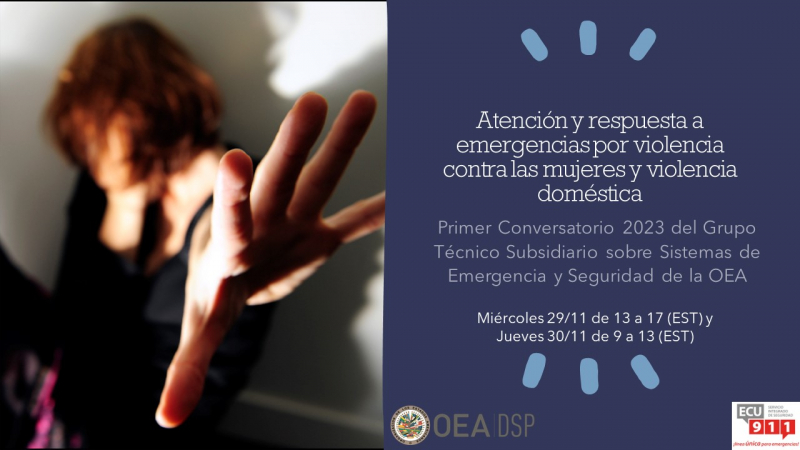

First 2023 Exchnange of the OAS Technical Subsidiary Group on Emergency and Security Systems took place on Wednesday 29 and Thursday 30.
For more information, please click here:
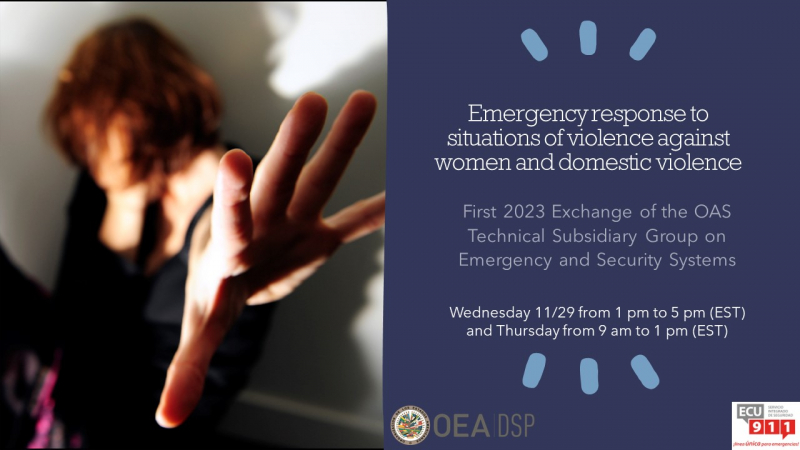
Alertas | Alerts
Impact of the Android 13 update on emergency calls and PSAPs operations
The false call mystery (The Crisis Response Journal, 18:3, September 2023)

The Android 13 update, which started in Q4 2022 with a progressive roll-out, included an emergency SOS functionality to trigger emergency calling after pressing the power button of the handset a certain number of times. That Android 13 update was adapted in different manners by OEMs, and recent data seems to suggest that there was a high increase in automatic false calls generated specifically from Samsung devices.
Cops ask Android users to disable Emergency SOS over accidental 911 calls
Source: Phone Arena, Alan Firiedman, April 25, 2023

Public urged to disable automatic 911 feature on their phones after surge in false emergency calls
Source: NS News, Jane Seyd, May 19, 2023

Police in Ontario asking Android users to check settings after increase in 911 calls
Source: Global News, Hannah Jackson, April 14, 2023

Un importante mensaje de nuestro Jefe de Operaciones
Fuente: Cuenta de Twitter del Sistema de Emergencias 9-1-1 de Costa Rica, 2 de julio, 2023
Biblioteca | Library
Document
NENA & Carbyne | 2024 Pulse of 9-1-1. State of the Industry Survey
2024 survey carried out by NENA and Carbyne targeting emergency ...
Report
EENA | Emergency Communications from Third-Party Service Providers
This report aims to examine current arrangements in Europe between PSAPs and TPSPs and to compare the different approaches in place. The effectiveness of these approaches are assessed. It is also hoped that the report will serve to inform new TPSPs as to how they can more easily work with PSAPs across Europe and...
Document
NENA | Standard to Protect the Wellbeing of 9-1-1 Professionals
Report
Pew | New Research Suggests 911 Call Centers Lack Resources to Handle Behavioral Health Crises
Pew collaborated with the National Emergency Number Association (NENA) to develop and distribute an online questionnaire to 911 call centers to inquire about handling behavioral health crisis emergencies. From a sample of 233, 37 call centers in 27 states completed the questionnaire; these answers were used for the...
Video
Encountering People with Autism: A First Responders' Training
Article
Police Magazine | My Technology Can…Livestream 911 Calls Directly to Officers
Video
High School 9-1-1
Website
APCO Guidecards
Document
EENA | Transmitting video to the Public Safety Answering Point – a human perspective
Video technology has the potential to enhance emergency response by improving the situational awareness of emergency professionals and enabling citizens to easily transmit the details of complex situations. ...
Article
EMS1 | The information gradient: How all first responders contribute to the knowledge base
Document
MCP | Maintaining Operations Remotely During a Public-Health Crisis
Mission Critical Partners prepared this Whitepaper in April 2020 on how to maintain Public Safety Answering Point and Emergency Communications Center Operations working remotely during a public-health crisis. They identify scenarios and options that Emergency and Security Systems can leverage if remote operations...
Article
Maintaining ECC Operations Remotely During a Public Health Crisis
Video
Within the Trenches Podcast
Infographic
SIS ECU-911 | Qué hacer cuando se llama al número de emergencia
Video
No te calles, denunciar la violencia doméstica es el primer paso para detenerla
Article
Tracking Violent Crime with Ambulance Data: How Much Crime Goes Uncounted?
The majority of violent incidents recorded by ambulance and emergency services are not reported to the police. This article, which examined data from West Midlands, UK, suggests that adding medical data could increase the number of identified violent offences by 15 to 20% to the totals recorded by police alone.
Document
CSRIC VII Report Measuring Risk Magnitude and Remediation Costs in 9-1-1 and NG9-1-1 Networks
The Federal Communications Commission (FCC) directed CSRIC VII to study and produce a Report on Security Risks and Best Practices for Mitigation in 9-1-1 in Legacy, Transitional, and NG9-1-1 Implementations. IP networks facilitate NG9-1-1 architectures that enable new response capabilities, while also creating...
Website
NENA Wellness Continuum
Presentation
NENA Standards: Address Points and Boundaries
Document
PAHO | Servicios de Emergencias Médicas Pre-hospitalarias (SEM) COVID-19 Recomendaciones
Document
PAHO | Prehospital Emergency Medical Services (EMS) COVID-19 Recommendations
Document
PAHO | COVID-19 Recomendaciones para la expansión de capacidades de atención clínica y despliegue de equipos médicos de emergencia
Document
PAHO | COVID-19 Recommendations for medical surge capacity and deployment of emergency medical teams
Document
CISA | Emergency Communications Best Practices for Establishing Alternate Care Sites
Repositorio colaborativo | Collaborative repository
Esta Norma Técnica elaborada por el Secretariado Ejecutivo del Sistema Nacional de Seguridad Pública, a través del Centro Nacional de Información, plantea la estandarización de los Servicios de Atención de Llamadas de Emergencia, a través de medidas esenciales y básicas de infraestructura, organización, recursos humanos, operación, evaluación, tecnología y aspectos normativos. El objetivo es la...
This document is intended to serve as an outline, to assist 911 Public Safety Answering Point (PSAP)/Emergency Communications Center (ECC) managers/911 agencies in the preparation of a COVID-19 continuity of operations (COOP) response plan. PSAP/ECC managers/911 agencies are welcome to use this outline to develop a more detailed and specific COOP plan that meets the needs and circumstances of...
It offers a number of resources linke to disaster and emergency planning for U.S. EMS and disaster and contigency planning for 911 services in the U.S.It provides links to COVID-19 contingency plans for 911as well as a number of resources related to Telecommunicator Emergency Taskforce. The list includes materials to assist PSAP to better prepare for and react to a disaster situation.It also...
El Servicio Integrado de Seguridad ECU 911, en forma permanente mide los niveles de prestación que se entrega a la ciudadanía en respuesta a las situaciones de emergencia; en razón de que, existe evidencia que las llamadas de mal uso son elevadas, generando congestión en las líneas; así como una repercusión económica. Se plantea resolver la problemática a través de nuestra experiencia y...
El Número Único 9-1-1 es la línea directa de apoyo a la población en caso de emergencia. Una de las problemáticas más importantes para la consolidación de este servicio es la gran cantidad de llamadas improcedentes que se reciben todos los días. Este documento establece tres ejes para mitigar, prevenir, erradicar y sancionar aquellas llamadas consideradas de mal uso:Eje 1. Protocolo Tecnológico...
Este documento presenta una metodología que podría servir como referencia para guiar procesos de elaboración de protocolos para la atención y respuesta a emergencias relacionadas con personas con discapacidad de manera articulada e integral. El proceso se plantea en tres estapas: 1. Etapa de pre elaboración (o preparatora), 2. Etapa de elaboración, y 3. Etapa de pos elaboración.
El presente documento es tan solo un esquema en el que se presentan, en términos generales, los lineamientos para ayudar a los organismos de servicios de emergencia (911) y a los administradores de puntos de respuesta de seguridad pública/centros de comunicaciones de emergencia en la preparación de un plan de respuesta para la continuidad de operaciones ante la pandemia de COVID-19.
Presentación de la herraimenta de alta tecnología, Distancia2, basada en algoritmos de inteligencia artificial para evitar la aglomeración de personas. Permite monitorear el cumplimiento de la distancia reglamentaria de 2 metros en espacios públcios y alertar a la ciudadanía a través de altavoces incorporados en las cámaras de videovigilancia.
Este documento, elaborado por el Sistema de Emergencias 9-1-1 de Costa Rica, ofrece una serie de respuestas preguntas básicas sobre el coronavirus, el COVID-19, cuáles son los síntomas, cuándo es necesario hacer una prueba de detección, cuáles son las conductas, comportamientos y medidas de prevención que se deben tomar, entre otras preguntas claves para la ciudadanía.
A través de este procedimiento, el Servicio Integrado de Seguridad ECU-911 establece los lineamientos a seguir ante la activación de emergencias de alto impacto. Incluye lineamientos operativos, tecnológicos y de comunicación, y administrativos.
Calendar
| Sun | Mon | Tue | Wed | Thu | Fri | Sat |
|---|---|---|---|---|---|---|
|
27
|
28
|
29
|
30
|
31
|
1
|
2
|
|
|
|
|
|
|
|
|
|
3
|
4
|
5
|
6
|
7
|
8
|
9
|
|
|
|
|
|
|
|
|
|
10
|
11
|
12
|
13
|
14
|
15
|
16
|
|
|
|
|
|
|
|
|
|
17
|
18
|
19
|
20
|
21
|
22
|
23
|
|
|
|
|
|
|
|
|
|
24
|
25
|
26
|
27
|
28
|
29
|
30
|
|
|
|
|
|
|
|
|
|
31
|
1
|
2
|
3
|
4
|
5
|
6
|
|
|
|
|
|
|
|
|
Comunidades de práctica | Communities of practice
 Ubicación Móvil Avanzada | Advanced Mobile Location
Ubicación Móvil Avanzada | Advanced Mobile Location
 Collaborativa Coalition for International Public Safety
Collaborativa Coalition for International Public Safety
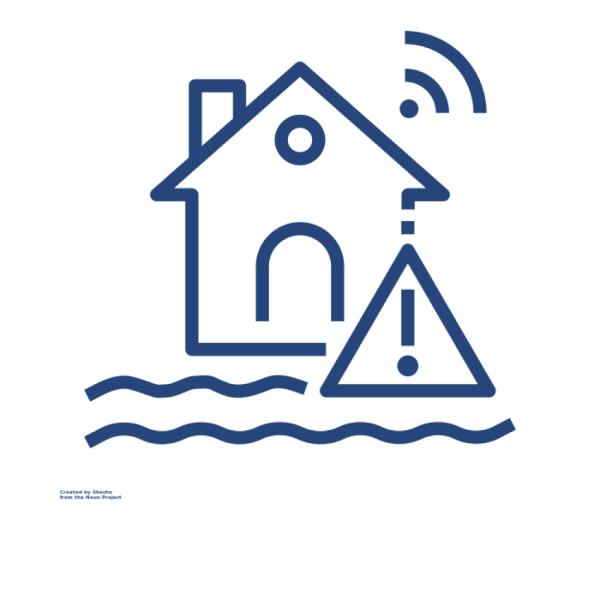 Comunicación en Emergencias | Emergency Communications
Comunicación en Emergencias | Emergency Communications
Estadísticas de Emergencia | Emergency Statistics
 Experiencias COVID-19 | COVID-19 Experiences
Experiencias COVID-19 | COVID-19 Experiences
 Inclusión y Accesibilidad | Inclusion and Accessibility
Inclusión y Accesibilidad | Inclusion and Accessibility

Publicación Piloto: PSAPs Edición América Latina
Salud, Bienestar y Autocuidado | Health, Wellness and Selfcare

SES - Mal Uso del Número de Emergencia | ESS - Misuse of the Emergency Number
 SES-Protocolo/Guía | ESS-Protocol/Guide
SES-Protocolo/Guía | ESS-Protocol/Guide
 SES-Violencia Doméstica | ESS-Domestic Violence
SES-Violencia Doméstica | ESS-Domestic Violence
Uso de video para emergencias | Use of video in emergencies
Conversatorios 2023 | 2023 Exchanges
Conversatorios 2022 | 2022 Exchanges
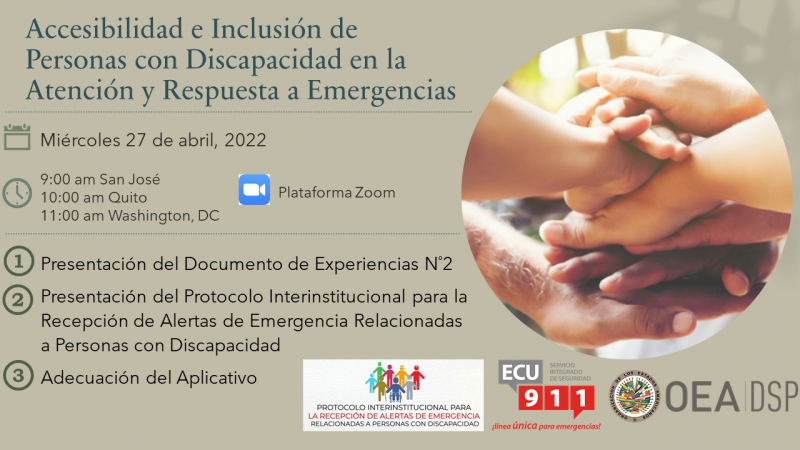 1er Conversatorio 2022: Inclusión y Accessibilidad | 1st 2022 Exchange: Inclusion and Accesibility
1er Conversatorio 2022: Inclusión y Accessibilidad | 1st 2022 Exchange: Inclusion and Accesibility
Conversatorios 2021 | 2021 Exchanges
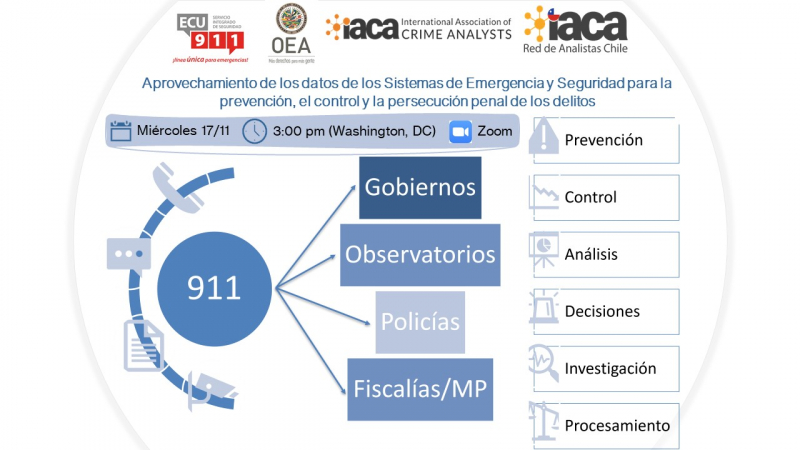 3er Conversatorio 2021: Aprovechamiento de los datos 911 | 3rd 2021 Exchange: Using 911 data
3er Conversatorio 2021: Aprovechamiento de los datos 911 | 3rd 2021 Exchange: Using 911 data
Conversatorios 2020 | 2020 Exchanges
4to Converstatorio 2020: Estrategias de Comunicación en Crisis | Crises Communication Strategies
Events | Eventos
Reuniones del GTS-SES | ESS-STG Meetings
 Conversatorios SES 2020 | 2020 ESS Discussions
Conversatorios SES 2020 | 2020 ESS Discussions

GTS-SES Presidencia | STG-ESS Presidency
Webinars
|
NENA Standards: Webinar organized by Michael Baker International and DATAMARK on December 15th, 2020. Instructors Drew Fioranelli, GISP and Mark Whitby, ENP focused on: - Site/Structure Address Points - Civic Location Data Exchange Format (CLDXF) - Required GIS Data Layers - GIS Data Validations - Data Maintenance GIS Basics for the Public Safety Professional In the shift to Next Generation 9-1-1, GIS will play an important role in call routing for public safety, and much of the critical information on GIS is not widely shared with 9-1-1 dispatchers across the country. Join this webinar for an introduction of GIS and a high-level discussion of how it may affect the applications used in the PSAP for dispatch and 9-1-1.
COVID-19: Maintaining Operations Remotely (On-demand) Public safety answering points (PSAPs) and emergency communications centers (ECCs) play a critical role in communities during normal times, but in times of crisis, their role becomes even more important. As the COVID-19 pandemic continues its spread across the country, having a plan in place to support remote work for call takers and dispatchers to ensure ongoing operations is imperative. Strategic Planning for Public Safety Agencies (On-demand) In today’s evolving emergency communications environment, public safety agencies are often expected to do more with fewer resources. This reality means that strategic planning, and determining how best to leverage the available resources, is more crucial than ever before. This webinar focuses on the benefits of strategic planning for public safety agencies and different approaches to development. Panelists: • Chris Kelly, VIce-President and Director of Operations and Facilities, Mission Critical Partners • Bonnie Maney, Enterprise Client Manager, Mission Critical Partners
GIS Data & NG911 Readiness - Exploring Strategies, Dispelling Misconceptions Next Generation 911 (NG911) systems rely on geospatial routing generated by geographic information systems (GIS) to connect emergency callers and 911 centers. But GIS data first needs to be readied so that it aligns with industry standards and can be used in the NG911 environment. This webinar explores strategies for doing so while dispelling common misconceptions that lead many emergency communications center officials to believe that their GIS data is closer to NG911 readiness than it is.
Panelist: • Robert Horne, Senior Technology Specialist, MCP’s Technical Domain Lead and certified emergency number professional (ENP).
Coping with a pandemic: embracing flexibility and mobile technology for the “Next Normal” The COVID-19 pandemic is creating the “Next Normal” with new challenges and opportunities for mobile technologies. Explore how the current disruption impacts current and emerging technologies, as well as new use cases and recommendations for communication success across industries.
The 5G Horizon: What Government Needs to Do Today to Be Prepared Tomorrow As agencies seek to improve their services and their efficiency, many are looking at 5G as a game-changing technology. In this webinar, 5G industry experts will discuss the transparent facts of 5G, new use cases, and what agencies can do now to exploit the benefits of 5G.
Emergency Comms during the Pandemic This webinar explores issues that have arisen with sharing devices, moving to LTE networks, the coverage in rural areas and indoors, the effect on EMS and dispatch centers as they cancel services, work from home and a need to go beyond more than emergency services. Learn how text-to-911 services, location advancements and new technologies.
Taming 911 Turnover: Strategies for Success 911 telecommunicators everywhere are reaching a breaking point. It is no wonder that in the US, the average annual turnover is nearing 30% and 1 in 5 telecommunicators leave their job in the first year. With a shrinking applicant pool, it’s more important than ever to keep telecommunicators happy and engaged. This webinar povides innovative solutions that 911 centers are implementing to tame rising turnover. Speakers: • Joe Scaffidi •Patrick Botz Available on demand. Click here to register.
Optimizing PSAP Staff Performance & Reducing Turnover Running an emergency communications center isn’t easy. Challenges can come from every direction: scrutiny over incident handling, funding, and staffing issues. Telecommunicators are the very heart of emergency communications, but with high levels of turnover, the revolving door is working against public safety answering points (PSAPs). In this session, you’ll learn how NICE Inform can give your PSAP the tools you need to improve retention, and coach, develop and train telecommunicators for success. This webinar features: • Joe Scaffidi, RVP of PSAP Performance Solutions, NICE • Karen Carlson, PSAP Product Manager, NICE, and former 911 Operations Manager at Brown County Public Safety Communications and Management Information Coordinator at FoxComm, Wisconsin This webinar is on demand. Prior registration is needed. Click here to register.
Top 911 Challenges with Incident Intelligence Analytics Fourth webinar of a 4-part webinar series organized by NICE on how to overcome today's top 9-1-1 challenges. This webinar features: • Joe Scaffidi, Regional Vice Presidente, NICE Public Safety • Patrick Botz, Director of Engagement, NICE Public Safety
Why Real-time Performance Metrics Matter This is the second wbinar of a 4-part webinar series organized by NICE on how to overcome today's top 9-1-1 challenges. This webinar focuses on performance measurement and reporting challenges that 9-1-1 directors are facing. The webinar features: • Barry Furey, CEO of Barry Furey Consulting and Training • Patrick Botz, Director of Engagement, NICE Public Safety Why Next Gen 9-1-1 Matters More Now This webinar has been organized by NICE, ATOS and Mission Critical Partners and features the following panelists: • John Rennie, General Manager, NICE • Phil Rotheran, Vice President, ATOS • Darrin Reilly, Chief Operating Officer, Mision Critical Partners The roundtable is moderated by Oatrick Botz, Director of Engagement, NICE
911 Turnover, Staffing and Retention Thiw webinar is part of a webinar series organized by NICE. In this session, speakers will address one of 911 top challenges, closing the Revolving Door: 911 Turnover, Staffing and Retention. First Responders, Stress Management and Coronavirus In this webinar, former paramedic, law enforcement trainer and resilience expert Mike Taigman explains how stress affects first responders and provides strategies to manage that stress during the long haul of the pandemic. He also provides guidelines on how public safety leaders can help decrease stress for their personnel on the frontlines of this epidemic. PoliceOne, FireRescue1 and EMS1 worked together with Lexipol to organize this webinar.
Recomendaciones para grupos USAR en el contexto de la pandemia COVID-19 USAR, oor sus siglas en inglés, significa Urban Search and Rescue, e implica la localización, extracción, y la estabilización inicial de personal atrapado en espacios cerrados o bajo escombros. Este webinar fue organizado por CEPREDENAC y contó con la intervención de: • Patricio Fuentes von J., Ingeniero en Proyectos, Bombero voluntario en Chile e instructor USAR Necesidades y retos humanitarios de la población migrante en la respuesta al COVID-19 Este segundo webinar de la serie organizada por el CEPREDENAC abordó los siguientes temas: Situación de los migrantes en el marco del COVID-19, Marcelo Pisani, Director General de la OIM para Centroamérica, Norteamérica y el Caribe (10:06) Impacto del COVID-19 como una amenaza biológica sobre los migrantes, Raúl Salazar, Jefe de la Oficina de Naciones Unidas para la Reducción del Riesgo de Desastres (16:22) Necesidades y retos humanitarios de la población migrante en la respuesta al COVID-19, Jesús Félix Rodríguez, Federación Internacional de la Cruz Roja y la Media Luna Roja (31:58) Incluyendo a los migrantes y a las poblaciones desplazadas en las actividades de preparación y de respuesta ante el COVID-19, Katherine Fuentes, Oficial Regional de Migración para el Triángulo Norte de Centroamérica, Cruz Roja Internacional (57:45)
Este webinar fue organizado por el Centro de Coordinación para la Prevención de los Desastres en América Central y República Dominicana (CEPREDENAC), perteneciente al Sistema de la Integración Centroamericana (SICA), con el apoyo de la Federación Internacional de la Cruz Roja. El mismo abordó los siguientes temas y panelistas: Sustaining Resilience During the COVID-19 Pandemia Speaker: The EU Artificial Intelligence Rulebook and What it Could Mean for Public Safety On 14 June, 2023, the European Parliament adopted its position on the AI rulebook paving the way for the interinstitutional negotiations set to finalise the world’s first comprehensive law on Artificial Intelligence. AI systems for dispatch or determining dispatch priorities may be considered as high-risk AI systems. In this webinar, EENA breaks down the EU AI Act and analyses what it could mean for emergency services. |
|
How disinformation & cyber threats affect emergency services during COVID-19 outbreak Webinar organized by the European Emergency Number Association (EENA) to explore how disinformation and cyber threats are affecting the work of public safety organizations and what can be done to minimize their impact in the fight against coronavirus. Speakers:
Go to Webinar Introducing INSCRAM: Bridging research and public safety In this Webinar, the Information Systems for Crisis Response and Management (ISCRAM) Association was presented to EENA members. INSCRAM is an international community of researchers who examine the design, use, and evaluation of information and communication technologies in contexts of emergency and disaster preparation, mitigation, response, and recovery. Speakers: Caroline Rizza, PhD Rob Grace, PhD Anouck Adrot, PhD
|
|
Data and strategies on emergency calls & public warning during COVID-19 outbreak Speakers:
Go to Webinar (25´30¨) |
|
Navigating the COVID-19 Pandemic from the 9-1-1 Center Speakers:
Go to Webinar (presentation) |
Podcasts
This is the audio section of the Crisis Response Journal.
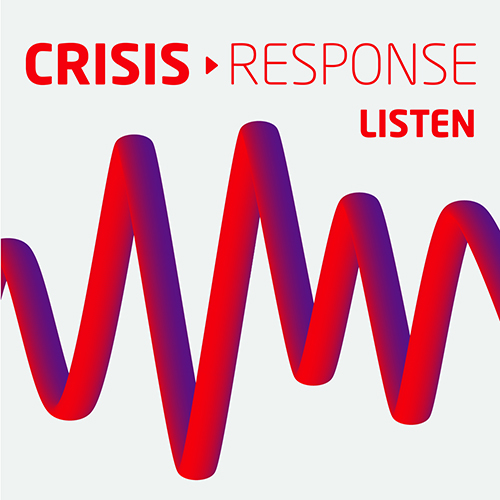



How Livestreaming 911 Calls Makes Officers More Effective and Efficient



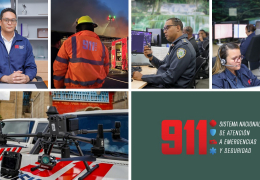
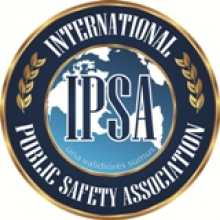
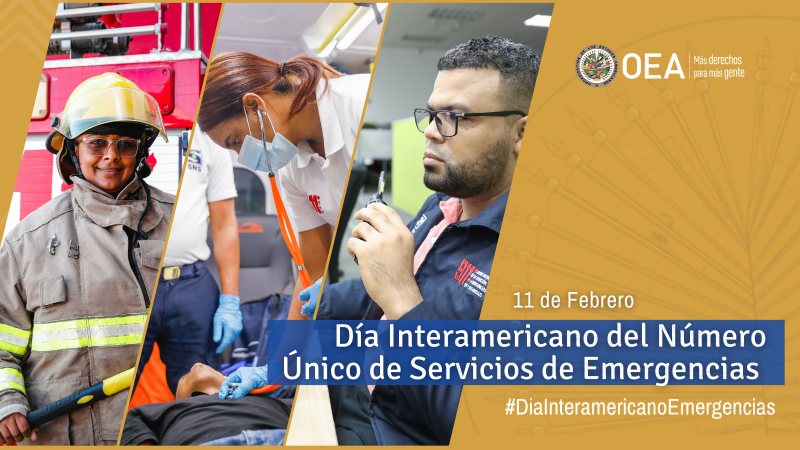
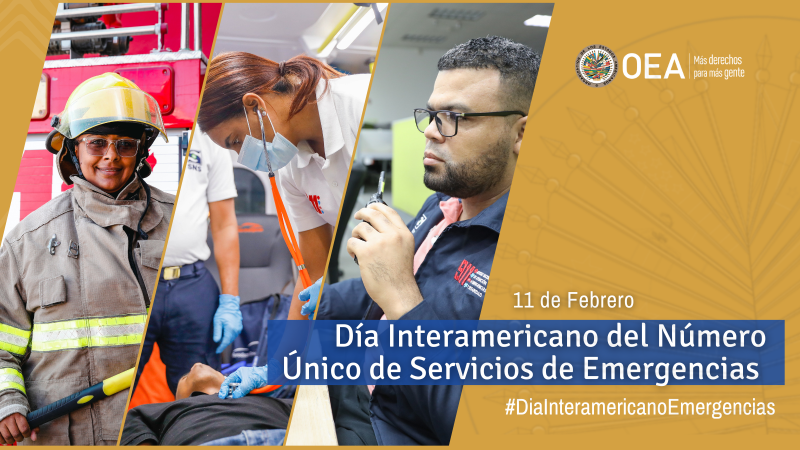
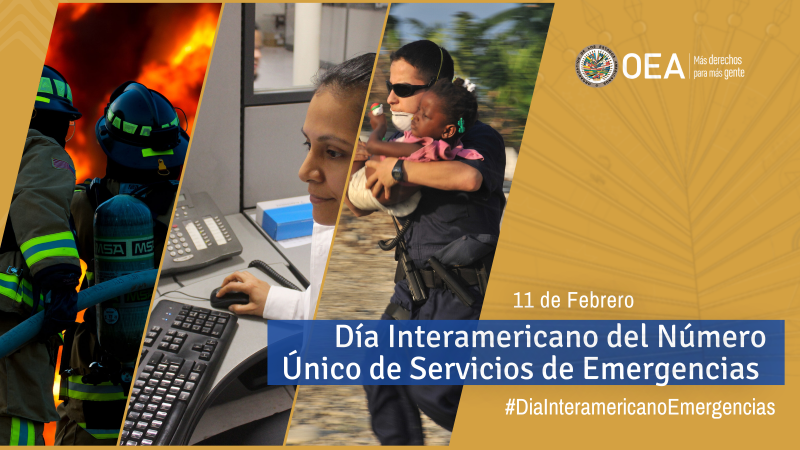 2023
2023

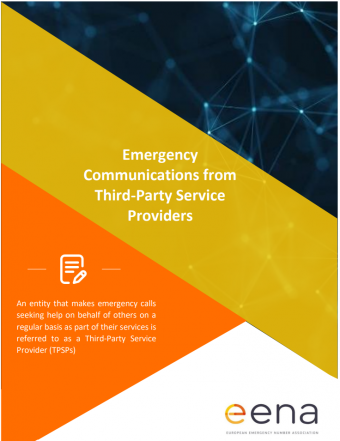


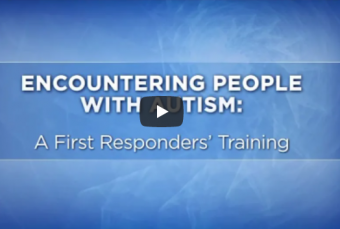



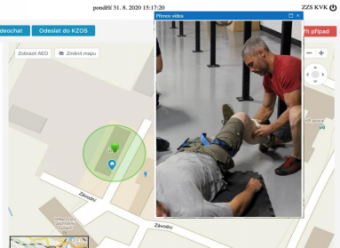

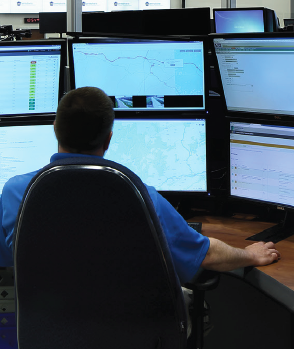


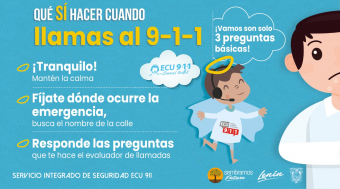

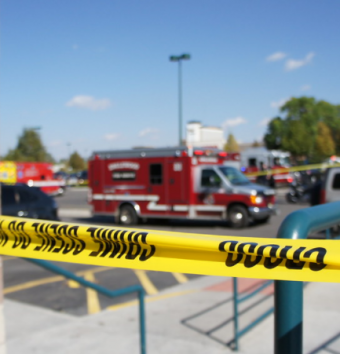
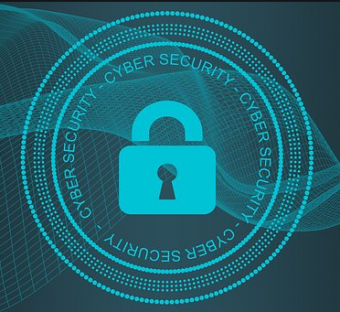

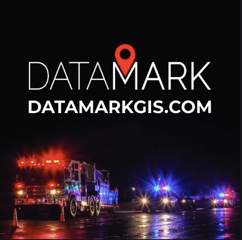




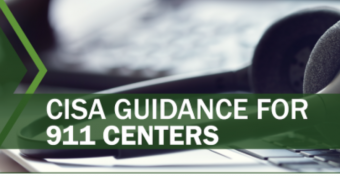
 TCC
TCC 2do Conversatorio 2022: Mal uso del número de emergencia | 2nd Exchange: Miuse of the emergency number
2do Conversatorio 2022: Mal uso del número de emergencia | 2nd Exchange: Miuse of the emergency number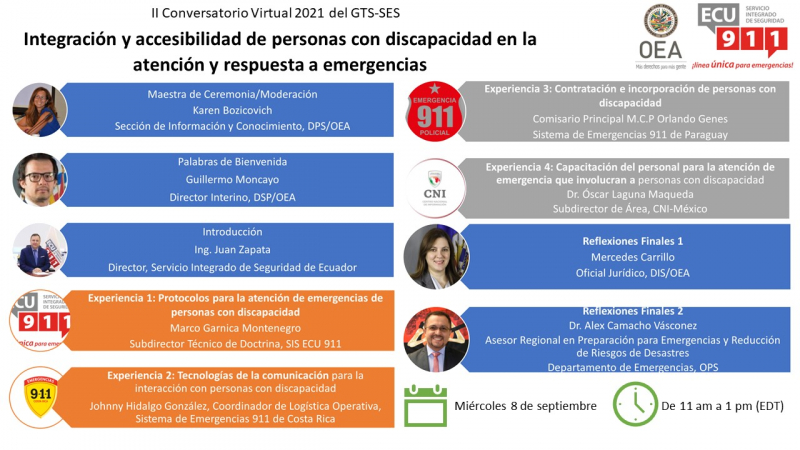 2do Conversatorio 2021: Inclusión y accesibilidad de personas con discapacidad | 2nd 2021 Exchange: Inclusion and accessibility of people with disabilities
2do Conversatorio 2021: Inclusión y accesibilidad de personas con discapacidad | 2nd 2021 Exchange: Inclusion and accessibility of people with disabilities  Seminario Internacional | International Seminar
Seminario Internacional | International Seminar Presidencia SIS ECU-911 | ECU-911 ISS Presidency
Presidencia SIS ECU-911 | ECU-911 ISS Presidency

